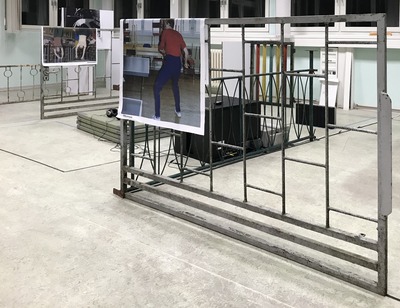
„TSC“
at "Turnen: A Vocabulary of Revolutionary Gestures."
private used fences from GDR - time, prints on fabric Stasi people during sports exercises at former gym Stasi, Campus für Demokratie, BStu, Berlin 2019
A site-specific exhibition about dissident bodies in the former gymnastics hall of the Stasi curated by Elske Rosenfeld, with works by Gabriele Stötzer and Wolfgang Scholz in an installation "TSC" by Andrea Pichl
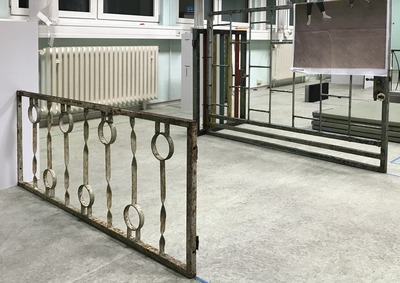
„TSC“
at "Turnen: A Vocabulary of Revolutionary Gestures."
private used fences from GDR - time, prints on fabric Stasi people during sports exercises at former gym Stasi, Campus für Demokratie, BStu, Berlin 2019
A site-specific exhibition about dissident bodies in the former gymnastics hall of the Stasi curated by Elske Rosenfeld, with works by Gabriele Stötzer and Wolfgang Scholz in an installation "TSC" by Andrea Pichl
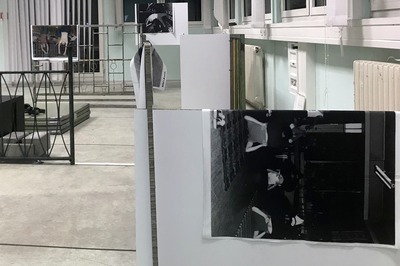
„TSC“
at "Turnen: A Vocabulary of Revolutionary Gestures."
private used fences from GDR - time, prints on fabric Stasi people during sports exercises at former gym Stasi, Campus für Demokratie, BStu, Berlin 2019
A site-specific exhibition about dissident bodies in the former gymnastics hall of the Stasi curated by Elske Rosenfeld, with works by Gabriele Stötzer and Wolfgang Scholz in an installation "TSC" by Andrea Pichl
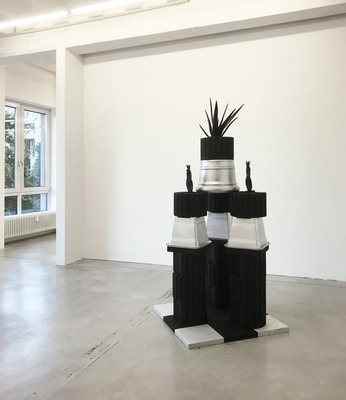
"delirious Dinge II" Part II
in "Stadtschlawinereien" at KOW Berlin, 2019
with: Alice Creischer, Dierk Schmidt, Michael E. Smith, Brandlhuber+, Larissa Fassler, Adelita Husni-Bey, Peng!, Andrea Pichl, Andreas Siekmann, Bárbara Wagner & Benjamin de Burca, Weekend & Plaste, et al.
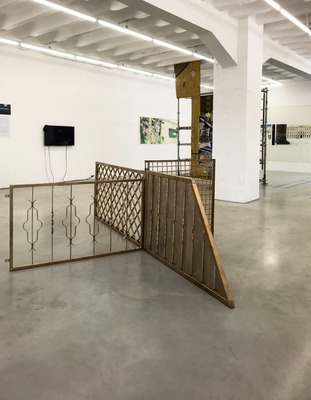
"widerstreben" Part II
in "Stadtschlawinereien" at KOW Berlin, 2019
with: Alice Creischer, Dierk Schmidt, Michael E. Smith, Brandlhuber+, Larissa Fassler, Adelita Husni-Bey, Peng!, Andrea Pichl, Andreas Siekmann, Bárbara Wagner & Benjamin de Burca, Weekend & Plaste, et al.
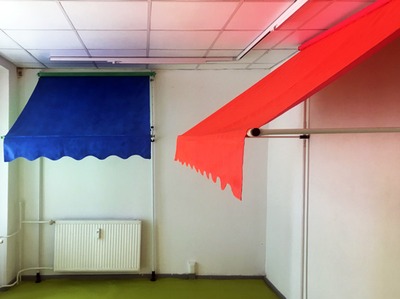
"Abirrung"
Installation at studio im HOCHHAUS, Berlin, 2019

"Abirrung"
Installation at studio im HOCHHAUS, Berlin, 2019
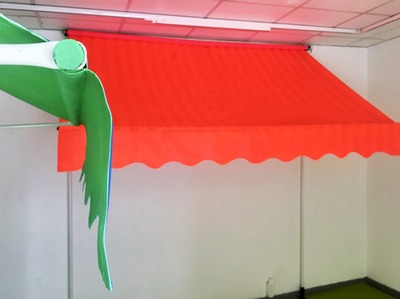
"Abirrung"
Installation at studio im HOCHHAUS, Berlin, 2019
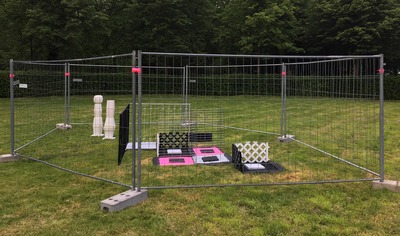
"delirious Dinge II"
in: "Modell und Ruine", Werkleitz Festival 2019, anlässlich 100 Jahre Bauhaus, Dessau, Georgengarten
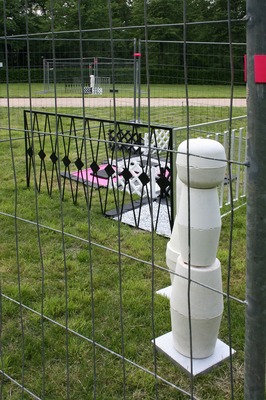
"delirious Dinge II"
in: "Modell und Ruine", Werkleitz Festival 2019, anlässlich 100 Jahre Bauhaus, Dessau, Georgengarten

"delirious Dinge II"
in: "Modell und Ruine", Werkleitz Festival 2019, anlässlich 100 Jahre Bauhaus, Dessau
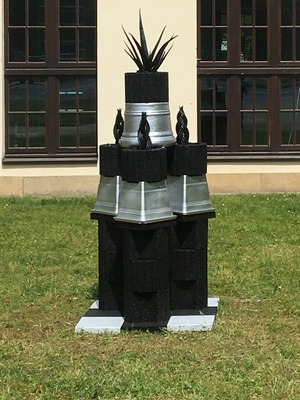
"delirious Dinge II"
in: "Modell und Ruine", Werkleitz Festival 2019, anlässlich 100 Jahre Bauhaus, Dessau, Georgengarten
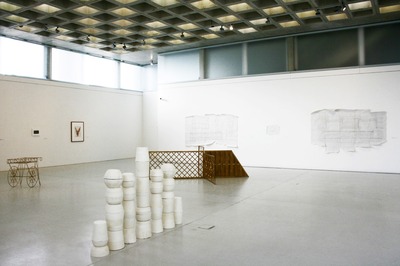
Ausstellungsansicht mit den Arbeiten aus "widerstreben" und "eine Norm" (Vordergrund), im Hintergrund Herman Glöckner in:
"Vielschichtig. Von der Räumlichkeit der Flächenteilung"
Museum dkw, Brandenburgisches Landesmuseum, Cottbus, 2019
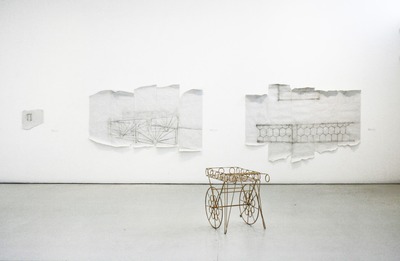
Ausstellungsansicht mit den Arbeiten aus "widerstreben" in:
"Vielschichtig. Von der Räumlichkeit der Flächenteilung"
Museum dkw, Brandenburgisches Landesmuseum, Cottbus, 2019
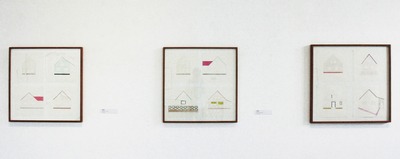
Ausstellungsansicht mit den Arbeiten "Häuser" (je 80 x 80 cm Rahmen) in:
"Vielschichtig. Von der Räumlichkeit der Flächenteilung"
Museum dkw, Brandenburgisches Landesmuseum, Cottbus, 2019
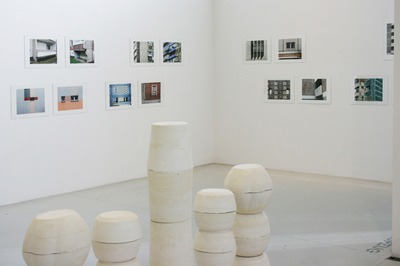
Ausstellungsansicht mit den Arbeiten "Eine Norm" (Vordergrund), im Hintergrund Fotos aus der Serie "Bau auf, bau auf." in:
"Vielschichtig. Von der Räumlichkeit der Flächenteilung"
Museum dkw, Brandenburgisches Landesmuseum, Cottbus, 2019
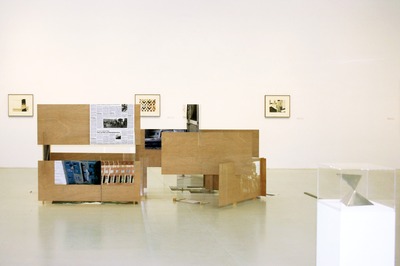
Ausstellungsansicht
in: "Vielschichtig. Von der Räumlichkeit der Flächenteilung"
Museum dkw, Brandenburgisches Landesmuseum, Cottbus, 2019
mit den Arbeiten Collagen Nr. 3, Nr. 4, Nr. 5 (Wand, Zeitungspapier, Faden auf Papier, je 70 x 80 cm, gerahmt),
"Klub Zukunft", 2014 (Sperrholz, Spiegel, Plexiglas, bedruckte Stoffe, 250 x 120 x 150 cm)
imVordergrund rechts: Hermann Glöckner
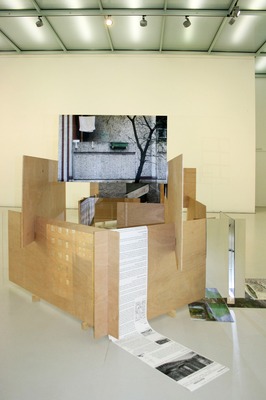
Ausstellungsansicht
in: "Vielschichtig. Von der Räumlichkeit der Flächenteilung"
Museum dkw, Brandenburgisches Landesmuseum, Cottbus, 2019
"Klub Zukunft", 2014 (Sperrholz, Spiegel, Plexiglas, bedruckte Stoffe, 250 x 120 x 150 cm)
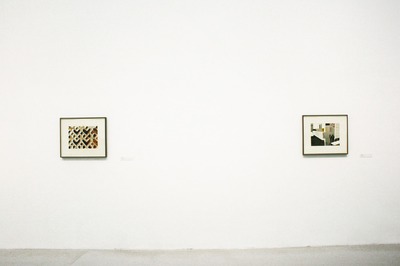
Ausstellungsansicht
in: "Vielschichtig. Von der Räumlichkeit der Flächenteilung"
Museum dkw, Brandenburgisches Landesmuseum, Cottbus, 2019
mit den Arbeiten Collagen Nr. 3, Nr. 4 (Wand, Zeitungspapier, Faden auf Papier, je 70 x 80 cm, gerahmt),
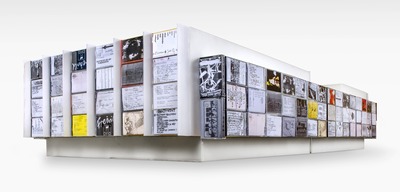
"weilweilweil", 2019
in "Palast der Republik - Utopie, Inspiration, Politikum"
Kunsthalle Rostock
Foto: Roman März
Nachbildung des Palastes der Republik aus Kassettencovern des DDR Underground, Archiv Heinz Havemeister, Sound (loop): aus der Rede Katarina Witt im Plenarsaal der Volkskammer im Palast der Republik, 1986
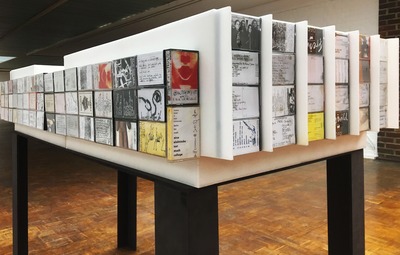
"weilweilweil", 2019
in "Palast der Republik - Utopie, Inspiration, Politikum"
Kunsthalle Rostock
Nachbildung des Palastes der Republik aus Kassettencovern des DDR Underground, Archiv Heinz Havemeister, Sound (loop): aus der Rede Katarina Witt im Plenarsaal der Volkskammer im Palast der Republik, 1986
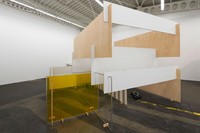
"Doublebind"
(2011), collection of the Nationalgalerie, Staatliche Museen zu Berlin
exhibition view at Hamburger Bahnhof – Museum für Gegenwart – Berlin in "Architektonika" and "Architektonika II" (2011-2013), curated by Gabriele Knapstein.
In the work “Doublebind”, the measurements of a standard 4-bedroom, 2-bedroom and 1-bedroom apartment of the ubiquitous East German apartment type WBS 70 are reproduced on a scale of 1:2 and superimposed. Onto the panels, which are made of different materials and surfaces, photographs are projected showing architectural details from social housing projects in Paris and Dublin, on the one hand, and from socialist housing programs in the GDR and Tashkent, Uzbekistan, on the other hand.
2011, H: 2950 mm B: 4450 mm L: 6800 mm, wood, acrylic glass,aluminiume, paper, video projections
with: Absalon, Jürgen Albrecht, Carl Andre, Sophie Calle, Nina Fischer & Maroan el Sani, Peter Fischli / David Weiss, Tho- mas Florschuetz, Isa Genzken, Dan Graham, Mika Taanila, Rachel Khe- doori, Sol LeWitt, Gordon Matta-Clark, Bruce Nauman, Manfred Pernice, Andrea Pichl, Ascan Pinckernelle, Hermann Pitz, Dieter Roth & Björn Roth, Jason Rhoades, Anri Sala, Thomas Schütte, Thomas Struth, James Turrell, Jeff Wall
Foto: Marion Lammersen / kubix
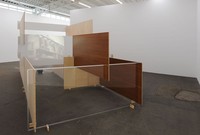
"Doublebind"
(2011), collection of the Nationalgalerie, Staatliche Museen zu Berlin
exhibition view at Hamburger Bahnhof – Museum für Gegenwart – Berlin in "Architektonika" and "Architektonika II" (2011-2013), curated by Gabriele Knapstein.
In the work “Doublebind”, the measurements of a standard 4-bedroom, 2-bedroom and 1-bedroom apartment of the ubiquitous East German apartment type WBS 70 are reproduced on a scale of 1:2 and superimposed. Onto the panels, which are made of different materials and surfaces, photographs are projected showing architectural details from social housing projects in Paris and Dublin, on the one hand, and from socialist housing programs in the GDR and Tashkent, Uzbekistan, on the other hand.
2011, H: 2950 mm B: 4450 mm L: 6800 mm, wood, acrylic glass,aluminiume, paper, video projections
with: Absalon, Jürgen Albrecht, Carl Andre, Sophie Calle, Nina Fischer & Maroan el Sani, Peter Fischli / David Weiss, Tho- mas Florschuetz, Isa Genzken, Dan Graham, Mika Taanila, Rachel Khe- doori, Sol LeWitt, Gordon Matta-Clark, Bruce Nauman, Manfred Pernice, Andrea Pichl, Ascan Pinckernelle, Hermann Pitz, Dieter Roth & Björn Roth, Jason Rhoades, Anri Sala, Thomas Schütte, Thomas Struth, James Turrell, Jeff Wall
Foto: Marion Lammersen / kubix
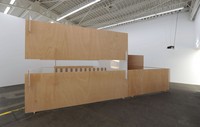
"Doublebind"
(2011), collection of the Nationalgalerie, Staatliche Museen zu Berlin
exhibition view at Hamburger Bahnhof – Museum für Gegenwart – Berlin in "Architektonika" and "Architektonika II" (2011-2013), curated by Gabriele Knapstein.
In the work “Doublebind”, the measurements of a standard 4-bedroom, 2-bedroom and 1-bedroom apartment of the ubiquitous East German apartment type WBS 70 are reproduced on a scale of 1:2 and superimposed. Onto the panels, which are made of different materials and surfaces, photographs are projected showing architectural details from social housing projects in Paris and Dublin, on the one hand, and from socialist housing programs in the GDR and Tashkent, Uzbekistan, on the other hand.
2011, H: 2950 mm B: 4450 mm L: 6800 mm, wood, acrylic glass,aluminiume, paper, video projections
with: Absalon, Jürgen Albrecht, Carl Andre, Sophie Calle, Nina Fischer & Maroan el Sani, Peter Fischli / David Weiss, Tho- mas Florschuetz, Isa Genzken, Dan Graham, Mika Taanila, Rachel Khe- doori, Sol LeWitt, Gordon Matta-Clark, Bruce Nauman, Manfred Pernice, Andrea Pichl, Ascan Pinckernelle, Hermann Pitz, Dieter Roth & Björn Roth, Jason Rhoades, Anri Sala, Thomas Schütte, Thomas Struth, James Turrell, Jeff Wall
Foto: Marion Lammersen / kubix

„Ein Beistand“
CNTRM, 2018
temporäres Projekt / temporary project space
ehemaliges Pförtnerhaus, Berlin
3 Markisen (150 m, 180 cm, 200 cm)
Als Thomas Rentmeister im Mai diesen Jahres für Kapitel 10 das Innere des Pförtnerhauses CNTRM komplett mit einer Schicht Penatencreme überzog, war dies nicht nur Schutz und Heilung für die Architektur, sondern vielmehr der Auftakt zur Renovierung des lange vernachlässigten und vergessenen Häuschens. Andrea Pichl wird nun für Kapitel 2 analog zu Rentmeister einen Schutz für das Äußere des CNTRM entwickeln. Ihre Installation "Ein Beistand" ist ganz bewusst eine Kombination zweier Objekte, die in unserer Wahrnehmung nicht recht zueinander gehören und aus diesem Grund zunächst höchst absurd erscheint.
Vor dem Hintergrund des Ortes mit seiner gegenwärtigen Transformation wirkt die Arbeit von Pichl angenehm prunkvoll und leitet zugleich das Ende der Serie im CNRTM feierlich ein.
When Thomas Rentmeister completely covered the interior of the Gatehouse CNTRM with a layer of Penaten cream in May of this year for Chapter 10, this wasn`t just protection and healing for the architecture, but rather the prelude to the renovation of the long neglected and forgotten little house. Andrea Pichl will now develop protection for the outer appearance of the CNTRM for Chapter 2 in analogy to Rentmeister. Her installation "Ein Beistand" is quite deliberately a combination of two objects that in our perception don`t really belong to each other and, for that reason, seem absurd at first site.
Against the background of the place with its current transformation, the work of Pichl is pleasantly pompous and at the same time marks the end of the exhibition series at CNRTM.
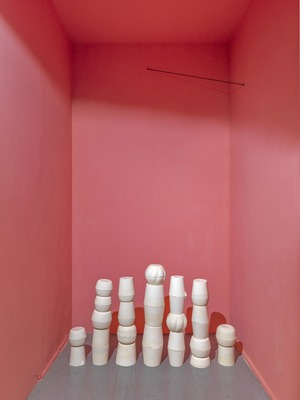
Eine Norm / a rule
2018, Gips/plaster
38 Teile /pieces
During the exhibition "Pissing in a River. Again!" at Kunstraum Kreuzberg, curated by Andrea Pichl and Stephanie Kloss
with: Caroline Achaintre, Yael Bartana, Caro Bittermann, Teresa Burga, Susanne Bürner, Keren Cytter, Natalie Czech, Tatjana Doll, Kerstin Drechsel, Valérie Favre, Berta Fischer, Laura Horelli, Nadira Husain, Anne-Mie van Kerckhoven, Stephanie Kloss, Folke Köbberling, Julia Lazarus, Hanne Lippard, Sarah Lüttchen, Inge Mahn, Andrea Pichl, Katrin Plavcak, Laure Prouvost, Sabine Reinfeld, Farzaneh Rosta, Katharina Sieverding, Céline Struger, Barbara Trautmann, Raphaela Vogel, Ina Weber, Ruth Wolf-Rehfeldt
photo: Roman März

aus "widerstreben"
in: Standard International #5 Spatial Manifestation, loop Raum, 2018
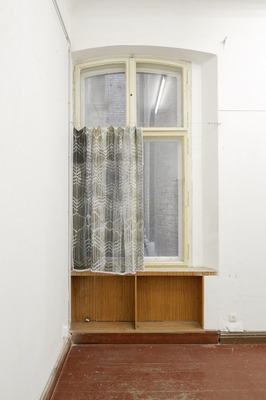
aus "widerstreben"
in: Standard International #5 Spatial Manifestation, loop Raum, 2018

aus "widerstreben"
in: Standard International #5 Spatial Manifestation, loop Raum, 2018
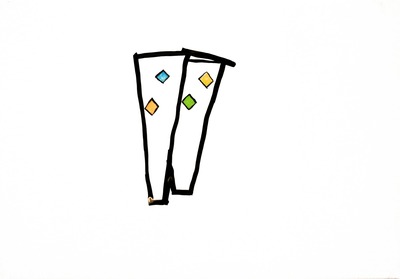
Eingänge / Entrances
Ink and pencil on stone paper
Each 49.8 cm x 34.9 cm, 2017

Eingänge / Entrances
Ink and pencil on stone paper
Each 49.8 cm x 34.9 cm, 2017
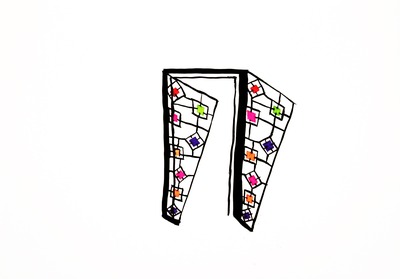
Eingänge / Entrances
Ink and pencil on stone paper
Each 49.8 cm x 34.9 cm, 2017
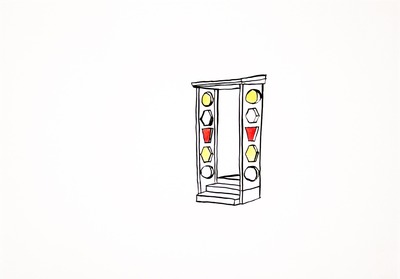
Eingänge / Entrances
Ink and pencil on stone paper
Each 49.8 cm x 34.9 cm, 2017

Eingänge / Entrances
Ink and pencil on stone paper
Each 49.8 cm x 34.9 cm, 2017
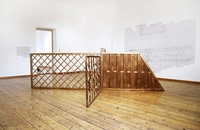
"widerstreben"
Galerie "weißer elefant", Berlin, 2018
solo show, exhibition view
golden varnished wooden and metallic fences, charcoal on wallpaper
"In her exhibition »widerstreben« the Berlin based artist Andrea Pichl dedicates herself to the most difficult question of our 'good taste'.
The six room installations she designed for the gallery space bring together objects and items, that come from different areas of our everyday culture and that constitute a new context. Profane and modularly applicable horticultural elements, from which she develops kind of a grid for the spatial structure of the gallery, are the basis of her site-specific production. Wallpapers and floor coverings from the hardware store correspond with the walls made of woodchip wallpaper and the wooden planks on site.
"It is obvious that the artist is not concerned with the apotheosis or condemnation of any particular architectural style or economic system. Instead, her work lets viewers observe what happens to things in transfer. What does it mean for an object if it is removed from its already absurd setting and shifted to the no less outlandish context of an exhibition? The artist takes a very cautious route, by the back door as it were, to an entirely independent way of reconstruction arising from artistic interest in the binding relation between things, in their relationship to one another and in mutual references and connections, while also manipulating the memory of the surroundings." - Susanne Prinz

"widerstreben"
Galerie "weißer elefant", Berlin, 2018
solo show, exhibition view
charcoal on wallpaper
Photo: Roman März
"In her exhibition »widerstreben« the Berlin based artist Andrea Pichl dedicates herself to the most difficult question of our 'good taste'.
The six room installations she designed for the gallery space bring together objects and items, that come from different areas of our everyday culture and that constitute a new context. Profane and modularly applicable horticultural elements, from which she develops kind of a grid for the spatial structure of the gallery, are the basis of her site-specific production. Wallpapers and floor coverings from the hardware store correspond with the walls made of woodchip wallpaper and the wooden planks on site.
"It is obvious that the artist is not concerned with the apotheosis or condemnation of any particular architectural style or economic system. Instead, her work lets viewers observe what happens to things in transfer. What does it mean for an object if it is removed from its already absurd setting and shifted to the no less outlandish context of an exhibition? The artist takes a very cautious route, by the back door as it were, to an entirely independent way of reconstruction arising from artistic interest in the binding relation between things, in their relationship to one another and in mutual references and connections, while also manipulating the memory of the surroundings." - Susanne Prinz
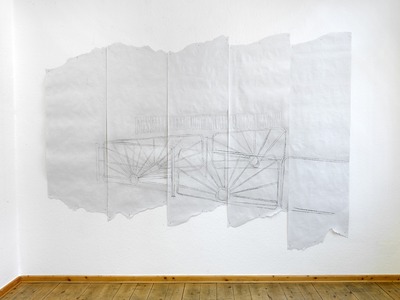
"widerstreben"
Galerie "weißer elefant", Berlin, 2018
solo show, exhibition view
charcoal on wallpaper
Photo: Roman März
"In her exhibition »widerstreben« the Berlin based artist Andrea Pichl dedicates herself to the most difficult question of our 'good taste'.
The six room installations she designed for the gallery space bring together objects and items, that come from different areas of our everyday culture and that constitute a new context. Profane and modularly applicable horticultural elements, from which she develops kind of a grid for the spatial structure of the gallery, are the basis of her site-specific production. Wallpapers and floor coverings from the hardware store correspond with the walls made of woodchip wallpaper and the wooden planks on site.
"It is obvious that the artist is not concerned with the apotheosis or condemnation of any particular architectural style or economic system. Instead, her work lets viewers observe what happens to things in transfer. What does it mean for an object if it is removed from its already absurd setting and shifted to the no less outlandish context of an exhibition? The artist takes a very cautious route, by the back door as it were, to an entirely independent way of reconstruction arising from artistic interest in the binding relation between things, in their relationship to one another and in mutual references and connections, while also manipulating the memory of the surroundings." - Susanne Prinz
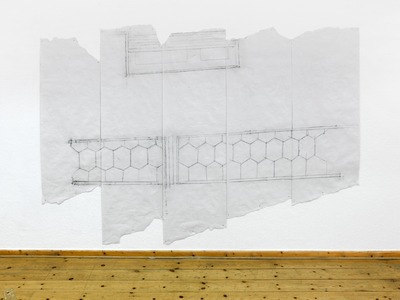
"widerstreben"
Galerie "weißer elefant", Berlin, 2018
solo show, exhibition view
charcoal on wallpaper
Photo: Roman März
"In her exhibition »widerstreben« the Berlin based artist Andrea Pichl dedicates herself to the most difficult question of our 'good taste'.
The six room installations she designed for the gallery space bring together objects and items, that come from different areas of our everyday culture and that constitute a new context. Profane and modularly applicable horticultural elements, from which she develops kind of a grid for the spatial structure of the gallery, are the basis of her site-specific production. Wallpapers and floor coverings from the hardware store correspond with the walls made of woodchip wallpaper and the wooden planks on site.
"It is obvious that the artist is not concerned with the apotheosis or condemnation of any particular architectural style or economic system. Instead, her work lets viewers observe what happens to things in transfer. What does it mean for an object if it is removed from its already absurd setting and shifted to the no less outlandish context of an exhibition? The artist takes a very cautious route, by the back door as it were, to an entirely independent way of reconstruction arising from artistic interest in the binding relation between things, in their relationship to one another and in mutual references and connections, while also manipulating the memory of the surroundings." - Susanne Prinz
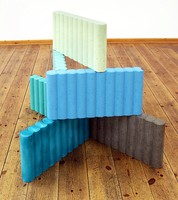
"widerstreben"
Galerie "weißer elefant", Berlin, 2018
solo show, exhibition view
colored varnished concrete
"In her exhibition »widerstreben« the Berlin based artist Andrea Pichl dedicates herself to the most difficult question of our 'good taste'.
The six room installations she designed for the gallery space bring together objects and items, that come from different areas of our everyday culture and that constitute a new context. Profane and modularly applicable horticultural elements, from which she develops kind of a grid for the spatial structure of the gallery, are the basis of her site-specific production. Wallpapers and floor coverings from the hardware store correspond with the walls made of woodchip wallpaper and the wooden planks on site.
"It is obvious that the artist is not concerned with the apotheosis or condemnation of any particular architectural style or economic system. Instead, her work lets viewers observe what happens to things in transfer. What does it mean for an object if it is removed from its already absurd setting and shifted to the no less outlandish context of an exhibition? The artist takes a very cautious route, by the back door as it were, to an entirely independent way of reconstruction arising from artistic interest in the binding relation between things, in their relationship to one another and in mutual references and connections, while also manipulating the memory of the surroundings." - Susanne Prinz

"widerstreben"
Galerie "weißer elefant", Berlin, 2018
solo show, exhibition view
silver varnished fences
"In her exhibition »widerstreben« the Berlin based artist Andrea Pichl dedicates herself to the most difficult question of our 'good taste'.
The six room installations she designed for the gallery space bring together objects and items, that come from different areas of our everyday culture and that constitute a new context. Profane and modularly applicable horticultural elements, from which she develops kind of a grid for the spatial structure of the gallery, are the basis of her site-specific production. Wallpapers and floor coverings from the hardware store correspond with the walls made of woodchip wallpaper and the wooden planks on site.
"It is obvious that the artist is not concerned with the apotheosis or condemnation of any particular architectural style or economic system. Instead, her work lets viewers observe what happens to things in transfer. What does it mean for an object if it is removed from its already absurd setting and shifted to the no less outlandish context of an exhibition? The artist takes a very cautious route, by the back door as it were, to an entirely independent way of reconstruction arising from artistic interest in the binding relation between things, in their relationship to one another and in mutual references and connections, while also manipulating the memory of the surroundings." - Susanne Prinz

"widerstreben"
Galerie "weißer elefant", Berlin, 2018
solo show, exhibition view
silver, gold and bronce varnished concrete, fabric, printed curtain
"In her exhibition »widerstreben« the Berlin based artist Andrea Pichl dedicates herself to the most difficult question of our 'good taste'.
The six room installations she designed for the gallery space bring together objects and items, that come from different areas of our everyday culture and that constitute a new context. Profane and modularly applicable horticultural elements, from which she develops kind of a grid for the spatial structure of the gallery, are the basis of her site-specific production. Wallpapers and floor coverings from the hardware store correspond with the walls made of woodchip wallpaper and the wooden planks on site.
"It is obvious that the artist is not concerned with the apotheosis or condemnation of any particular architectural style or economic system. Instead, her work lets viewers observe what happens to things in transfer. What does it mean for an object if it is removed from its already absurd setting and shifted to the no less outlandish context of an exhibition? The artist takes a very cautious route, by the back door as it were, to an entirely independent way of reconstruction arising from artistic interest in the binding relation between things, in their relationship to one another and in mutual references and connections, while also manipulating the memory of the surroundings." - Susanne Prinz

"widerstreben"
Galerie "weißer elefant", Berlin, 2018
solo show, exhibition view
silver, gold and bronce varnished concrete, fabric
"In her exhibition »widerstreben« the Berlin based artist Andrea Pichl dedicates herself to the most difficult question of our 'good taste'.
The six room installations she designed for the gallery space bring together objects and items, that come from different areas of our everyday culture and that constitute a new context. Profane and modularly applicable horticultural elements, from which she develops kind of a grid for the spatial structure of the gallery, are the basis of her site-specific production. Wallpapers and floor coverings from the hardware store correspond with the walls made of woodchip wallpaper and the wooden planks on site.
"It is obvious that the artist is not concerned with the apotheosis or condemnation of any particular architectural style or economic system. Instead, her work lets viewers observe what happens to things in transfer. What does it mean for an object if it is removed from its already absurd setting and shifted to the no less outlandish context of an exhibition? The artist takes a very cautious route, by the back door as it were, to an entirely independent way of reconstruction arising from artistic interest in the binding relation between things, in their relationship to one another and in mutual references and connections, while also manipulating the memory of the surroundings." - Susanne Prinz

"widerstreben"
Galerie "weißer elefant", Berlin, 2018
solo show, exhibition view
golden varnished flower box
"In her exhibition »widerstreben« the Berlin based artist Andrea Pichl dedicates herself to the most difficult question of our 'good taste'.
The six room installations she designed for the gallery space bring together objects and items, that come from different areas of our everyday culture and that constitute a new context. Profane and modularly applicable horticultural elements, from which she develops kind of a grid for the spatial structure of the gallery, are the basis of her site-specific production. Wallpapers and floor coverings from the hardware store correspond with the walls made of woodchip wallpaper and the wooden planks on site.
"It is obvious that the artist is not concerned with the apotheosis or condemnation of any particular architectural style or economic system. Instead, her work lets viewers observe what happens to things in transfer. What does it mean for an object if it is removed from its already absurd setting and shifted to the no less outlandish context of an exhibition? The artist takes a very cautious route, by the back door as it were, to an entirely independent way of reconstruction arising from artistic interest in the binding relation between things, in their relationship to one another and in mutual references and connections, while also manipulating the memory of the surroundings." - Susanne Prinz
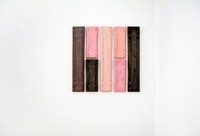
"widerstreben"
Galerie "weißer elefant", Berlin, 2018
solo show, exhibition view
colored plaster
"In her exhibition »widerstreben« the Berlin based artist Andrea Pichl dedicates herself to the most difficult question of our 'good taste'.
The six room installations she designed for the gallery space bring together objects and items, that come from different areas of our everyday culture and that constitute a new context. Profane and modularly applicable horticultural elements, from which she develops kind of a grid for the spatial structure of the gallery, are the basis of her site-specific production. Wallpapers and floor coverings from the hardware store correspond with the walls made of woodchip wallpaper and the wooden planks on site.
"It is obvious that the artist is not concerned with the apotheosis or condemnation of any particular architectural style or economic system. Instead, her work lets viewers observe what happens to things in transfer. What does it mean for an object if it is removed from its already absurd setting and shifted to the no less outlandish context of an exhibition? The artist takes a very cautious route, by the back door as it were, to an entirely independent way of reconstruction arising from artistic interest in the binding relation between things, in their relationship to one another and in mutual references and connections, while also manipulating the memory of the surroundings." - Susanne Prinz
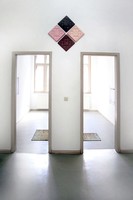
"widerstreben"
Galerie "weißer elefant", Berlin, 2018
solo show, exhibition view
colored plaster
"In her exhibition »widerstreben« the Berlin based artist Andrea Pichl dedicates herself to the most difficult question of our 'good taste'.
The six room installations she designed for the gallery space bring together objects and items, that come from different areas of our everyday culture and that constitute a new context. Profane and modularly applicable horticultural elements, from which she develops kind of a grid for the spatial structure of the gallery, are the basis of her site-specific production. Wallpapers and floor coverings from the hardware store correspond with the walls made of woodchip wallpaper and the wooden planks on site.
"It is obvious that the artist is not concerned with the apotheosis or condemnation of any particular architectural style or economic system. Instead, her work lets viewers observe what happens to things in transfer. What does it mean for an object if it is removed from its already absurd setting and shifted to the no less outlandish context of an exhibition? The artist takes a very cautious route, by the back door as it were, to an entirely independent way of reconstruction arising from artistic interest in the binding relation between things, in their relationship to one another and in mutual references and connections, while also manipulating the memory of the surroundings." - Susanne Prinz

"widerstreben"
Galerie "weißer elefant", Berlin, 2018
solo show, exhibition view
colored plaster
"In her exhibition »widerstreben« the Berlin based artist Andrea Pichl dedicates herself to the most difficult question of our 'good taste'.
The six room installations she designed for the gallery space bring together objects and items, that come from different areas of our everyday culture and that constitute a new context. Profane and modularly applicable horticultural elements, from which she develops kind of a grid for the spatial structure of the gallery, are the basis of her site-specific production. Wallpapers and floor coverings from the hardware store correspond with the walls made of woodchip wallpaper and the wooden planks on site.
"It is obvious that the artist is not concerned with the apotheosis or condemnation of any particular architectural style or economic system. Instead, her work lets viewers observe what happens to things in transfer. What does it mean for an object if it is removed from its already absurd setting and shifted to the no less outlandish context of an exhibition? The artist takes a very cautious route, by the back door as it were, to an entirely independent way of reconstruction arising from artistic interest in the binding relation between things, in their relationship to one another and in mutual references and connections, while also manipulating the memory of the surroundings." - Susanne Prinz

"widerstreben"
Galerie "weißer elefant", Berlin, 2018
solo show, exhibition view
digital printed carpet
"In her exhibition »widerstreben« the Berlin based artist Andrea Pichl dedicates herself to the most difficult question of our 'good taste'.
The six room installations she designed for the gallery space bring together objects and items, that come from different areas of our everyday culture and that constitute a new context. Profane and modularly applicable horticultural elements, from which she develops kind of a grid for the spatial structure of the gallery, are the basis of her site-specific production. Wallpapers and floor coverings from the hardware store correspond with the walls made of woodchip wallpaper and the wooden planks on site.
"It is obvious that the artist is not concerned with the apotheosis or condemnation of any particular architectural style or economic system. Instead, her work lets viewers observe what happens to things in transfer. What does it mean for an object if it is removed from its already absurd setting and shifted to the no less outlandish context of an exhibition? The artist takes a very cautious route, by the back door as it were, to an entirely independent way of reconstruction arising from artistic interest in the binding relation between things, in their relationship to one another and in mutual references and connections, while also manipulating the memory of the surroundings." - Susanne Prinz
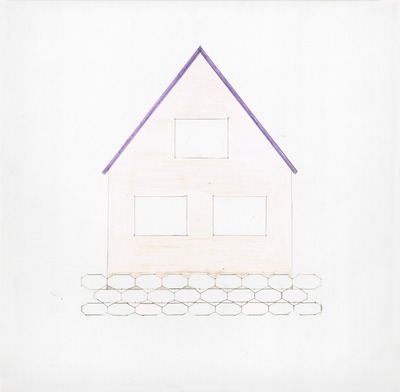
„Häuser“
Graphit und Buntstift auf Papier / graphite on paper
je / each 30 x 30 cm
2017
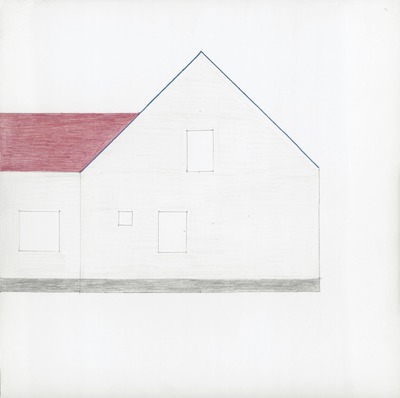
„Häuser“
Graphit und Buntstift auf Papier / graphite on paper
je / each 30 x 30 cm
2017

„Häuser“
Graphit und Buntstift auf Papier / graphite on paper
je / each 30 x 30 cm
2017

„Häuser“
Graphit und Buntstift auf Papier / graphite on paper
je / each 30 x 30 cm
2017
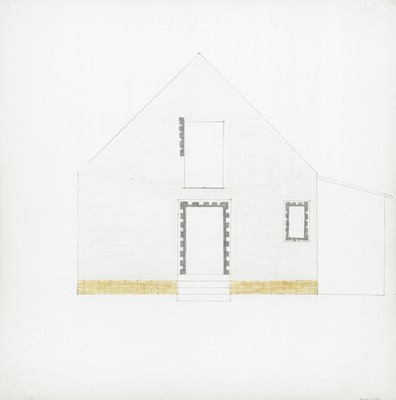
„Häuser“
Graphit und Buntstift auf Papier / graphite on paper
je / each 30 x 30 cm
2017
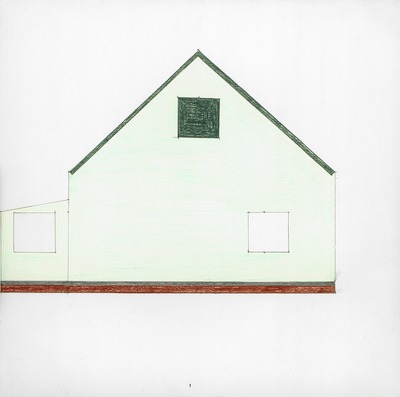
„Häuser“
Graphit und Buntstift auf Papier / graphite on paper
je / each 30 x 30 cm
2017
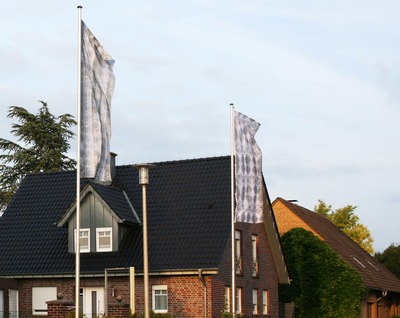
Hotel Tietmeyer
Außenraum Schöppingen, NRW
2 Fahnen, je 400 x 120 cm
Zwei Fahnen auf dem Parkplatz des Hotel Tietmeyer in Schöppingen auf denen zum einen
eine Gardine aus einem Nebengelass des Schloss Wiepersdorf in Brandenburg, das zu DDR-Zeiten die DDR-Kulturelite beherbergte und zum anderen eine Gardine der Goebbels-Villa und späterem FDJ-Schulungsheim bei Wandlitz, nördlich von Berlin abgebildet sind.
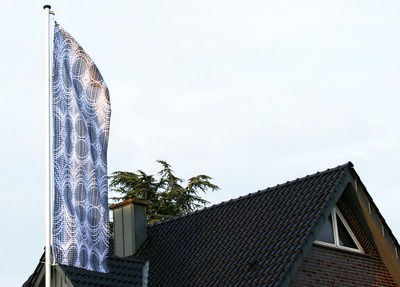
Hotel Tietmeyer
Außenraum Schöppingen, NRW
2 Fahnen, je 400 x 120 cm
Zwei Fahnen auf dem Parkplatz des Hotel Tietmeyer in Schöppingen auf denen zum einen
eine Gardine aus einem Nebengelass des Schloss Wiepersdorf in Brandenburg, das zu DDR-Zeiten die DDR-Kulturelite beherbergte und zum anderen eine Gardine der Goebbels-Villa und späterem FDJ-Schulungsheim bei Wandlitz, nördlich von Berlin abgebildet sind.
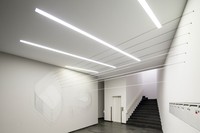
„Keine Atempause, Geschichte wird gemacht.“ L40 Kunstverein at Rosa-Luxemburg-Platz, Berlin, 2017, charcoal, fabric and paint on wall
Installation View
"From the point of view of urban theory history consists of those facets of the environment – buildings, sculptures, infra-structural objects etc. – which originated in previous periods. According to this definition history is not an abstraction but a layer of concrete facts. However, a lot of these architectural facts are mixed with individual and collective myths forming an alloy that is not necessarily based on numbers but nonetheless real.
Palpably, interesting architecture has managed to create a sense of identity and to supported collective memory at all times. In her new installation Keine Atempause, Geschichte wird gemacht Berlin based artist Andrea Pichl investigates the rules and mechanisms that define this process. As 20th implementation of the ongoing series of wallworks at L40 the artist chose to create an isometric projection of the Palace of the Soviets based on a design Hans Poelzig submitted to the architectural contest initiated by Stalin personally in 1931. Although neither Poelzig’s draft nor those of his vanguard competitors Le Corbusier, Gropius or Mendelsohn, were realized it nonetheless appears as an ideal starting point for Pichl’s artistic analysis. References include the destroyed and recently resurrected Cathedral of Christ the Saviour as well as the artist’s personal memories of a giant public pool in the ruins of the aborted winning design by Russian Boris Jofan. Associations are made to the headquarter of the former German communist party close by and to realized and unrealized buildings by Hans Poelzig – as well as some which were destroyed in WWII – that defined the neighbourhood.
To avoid misunderstandings: Although derived from a specific building the artwork is not intended to explain it’s individual history. Instead the genesis of the Palace of the Soviets is used as an essay on the impact of historical and sociological coordinates that effect the urban landscape. Pichl’s installation provides the background for a larger discussion focused on ideational constructs some of which have influenced the immediate neighbourhood of the Kunstverein deeply, which is located at Rosa-Luxemburg-Platz, once named after Horst Wessel and originally established as Bülowplatz." Susanne Prinz
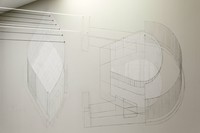
„Keine Atempause, Geschichte wird gemacht.“ L40 Kunstverein at Rosa-Luxemburg-Platz, Berlin, 2017, charcoal, fabric and paint on wall
Installation View

„Keine Atempause, Geschichte wird gemacht.“ L40 Kunstverein at Rosa-Luxemburg-Platz, Berlin, 2017, charcoal, fabric and paint on wall
Installation View
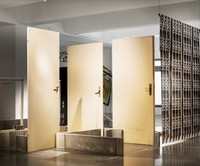
"Ekel, Ekel, Natur, Natur / Ich will Beton pur"
Exhibition view at "Gesellschaft zur Wertschätzung des Brutalismus / The Brutalism Appreciation Society"
at HarTwaremedien Kunstverein, Dortmund
curated by Inke Arns
approx: 20 sqm
Beton-Fertigbauteile, Türen, Fenster, bedruckte Stoffbahnen, 2017
"The title of Andrea Pichl's work is a citation from the song Zurück zum Beton (Back to concrete) of the German punk band S.Y.P.H. (from the album S.Y.P.H., 1980). The Berlin-based artist examines the various types of modular design methods as they are used in modern residential projects from different political and economic systems. An architectural detail from the Cité radieuse, the first Unité d’Habitation (eng.: residential unit or residential machine) of the French architect Le Corbusier, which opened in 1952 in Marseille, becomes the blueprint of her work. For the layout of the elements, the artist uses the Modulor, a proportion system developed by Le Corbusier meant to provide architecture with a mathematical order oriented to human scale. Le Corbusier's residential machines are the predecessors of the socialist prefab buildings that Andrea Pichl photographed in Tashkent, Uzbekistan, among other places. These come into play in her installation through individual "doors and windows from the prefab building" removed from empty buildings." Inke Arns
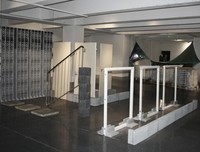
"Ekel, Ekel, Natur, Natur / Ich will Beton pur"
Exhibition view at "Gesellschaft zur Wertschätzung des Brutalismus / The Brutalism Appreciation Society"
at HarTwaremedien Kunstverein, Dortmund
curated by Inke Arns
approx: 20 sqm
Beton-Fertigbauteile, Türen, Fenster, bedruckte Stoffbahnen, 2017
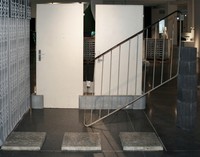
"Ekel, Ekel, Natur, Natur / Ich will Beton pur"
Exhibition view at "Gesellschaft zur Wertschätzung des Brutalismus / The Brutalism Appreciation Society"
at HarTwaremedien Kunstverein, Dortmund
curated by Inke Arns
approx: 20 sqm
Beton-Fertigbauteile, Türen, Fenster, bedruckte Stoffbahnen, 2017

graphite and pencil on stone paper
80 x 100 cm, 2017
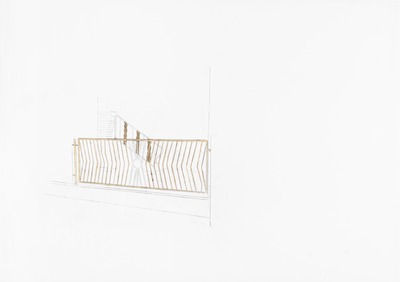
graphite and pencil on stone paper
80 x 100 cm, 2017
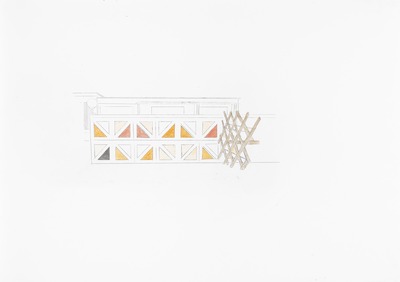
graphite and pencil on stone paper
80 x 100 cm, 2017
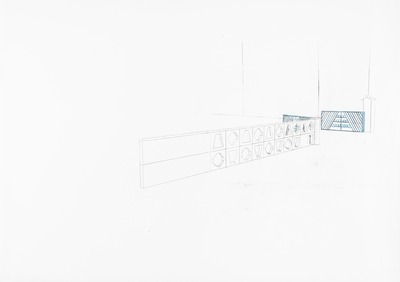
graphite and pencil on stone paper
80 x 100 cm, 2017
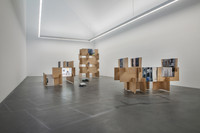
UNTERKUNFT FREIHEIT / ACCOMMODATION FREEDOM (SOLO SHOW), Exhibition View
KUNSTMUSEUM MORITZBURG HALLE (SAALE), GERMANY, AUGUST 29, 2014 - JANUARY 11, 2015

UNTERKUNFT FREIHEIT / ACCOMMODATION FREEDOM (SOLO SHOW), Exhibition View
KUNSTMUSEUM MORITZBURG HALLE (SAALE), GERMANY, AUGUST 29, 2014 - JANUARY 11, 2015
Foto: Marcus-Andreas Mohr
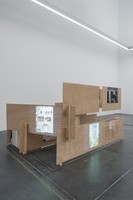
UNTERKUNFT FREIHEIT / ACCOMMODATION FREEDOM (SOLO SHOW), Exhibition View
KUNSTMUSEUM MORITZBURG HALLE (SAALE), GERMANY, AUGUST 29, 2014 - JANUARY 11, 2015
Foto: Marcus-Andreas Mohr
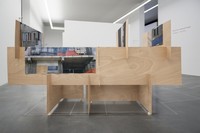
UNTERKUNFT FREIHEIT / ACCOMMODATION FREEDOM (SOLO SHOW), Exhibition View
KUNSTMUSEUM MORITZBURG HALLE (SAALE), GERMANY, AUGUST 29, 2014 - JANUARY 11, 2015
Foto: Marcus-Andreas Mohr
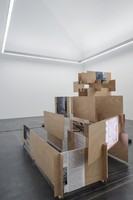
UNTERKUNFT FREIHEIT / ACCOMMODATION FREEDOM (SOLO SHOW), Exhibition View
KUNSTMUSEUM MORITZBURG HALLE (SAALE), GERMANY, AUGUST 29, 2014 - JANUARY 11, 2015
Foto: Marcus-Andreas Mohr

Photo: Andrea Pichl
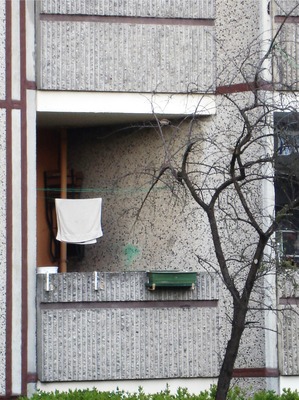
Photo: Andrea Pichl
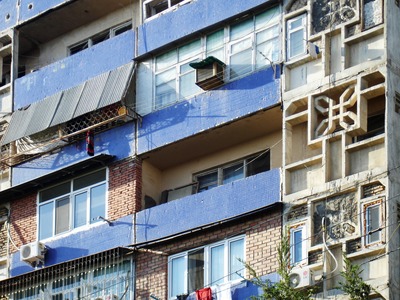
Photo: Andrea Pichl

ES KÖMMT DRAUF AN. / THE POINT IS.
AUSSTELLUNGSRAUM DER IG METALL ( Exhibition space of the Metalworkers Union Building (Mendelsohn), BERLIN, GERMANY
Foto: Bodo Grzonka

ES KÖMMT DRAUF AN. / THE POINT IS.
AUSSTELLUNGSRAUM DER IG METALL ( Exhibition space of the Metalworkers Union Building (Mendelsohn), BERLIN, GERMANY
Foto: Bodo Grzonka
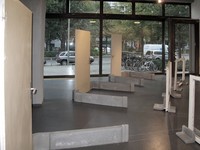
ES KÖMMT DRAUF AN. / THE POINT IS.
AUSSTELLUNGSRAUM DER IG METALL ( Exhibition space of the Metalworkers Union Building (Mendelsohn), BERLIN, GERMANY
Foto: Bodo Grzonka
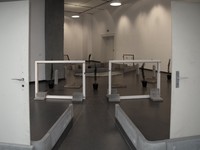
ES KÖMMT DRAUF AN. / THE POINT IS.
AUSSTELLUNGSRAUM DER IG METALL ( Exhibition space of the Metalworkers Union Building (Mendelsohn), BERLIN, GERMANY
Foto: Bodo Grzonka

Club Zukunft
2014
Plywood, printed canvas and satin, acrylglass, mirrors, projections
150 x 350 x 160 cm
Part of "Dialogue #1” (2014), Andrea Pichl & Anne-Mie Van Kerckhoven
M HKA, Antwerp, Belgium
photo: M HKA
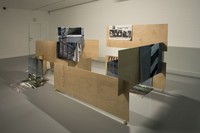
Club Zukunft
2014
Plywood, printed canvas and satin, acrylglass, mirrors, projections
150 x 350 x 160 cm
Part of "Dialogue #1” (2014), Andrea Pichl & Anne-Mie Van Kerckhoven
M HKA, Antwerp, Belgium
photo: M HKA
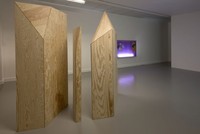
zwischen
2012
plywood
220 x 150 x 180 cm
Exhibition View "Dialogue #1” (2014), Andrea Pichl & Anne-Mie Van Kerckhoven
M HKA, Antwerp, Belgium
photo: M HKA
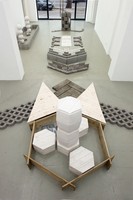
"delirious Dinge"
Krome Gallery Berlin 2013/2014
Exhibition View

"Horst"
in "delirious Dinge"
at Krome Gallery Berlin 2013/2014
wood, plaster, concrete
ca 445 x 300 x 130 cm

"Harry"
in "delirious Dinge"
at Krome Gallery Berlin 2013/2014
concrete, print on textile
ca 180 x 140 x 101 cm
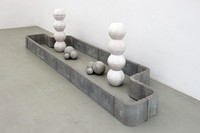
"Michael"
in "delirious Dinge"
at Krome Gallery Berlin 2013/2014
plaster, concrete
ca 340 x 90 x 90 cm

"Kevin"
in "delirious Dinge"
at Krome Gallery Berlin 2013/2014
plaster, concrete, print on textile
ca 165 x 165 cm

"Marcel"
in "delirious Dinge"
at Krome Gallery Berlin 2013/2014
plaster, concrete, printed fabric
ca 200 x 157 x 21 cm

Nr. 7
Collage /Series
newspaper and thread on paper
50 x 60 cm
2013
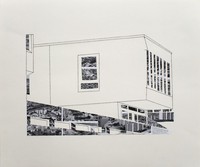
Nr. 6
Collage /Series
newspaper and thread on paper
50 x 60 cm
2013
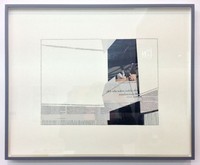
"Nr. 1"
Collage /Series
newspaper and thread on paper
50 x 60 cm
2013
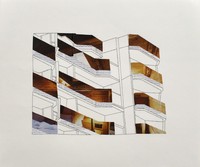
Nr. 4
Collage /Series
newspaper and thread on paper
50 x 60 cm
2013
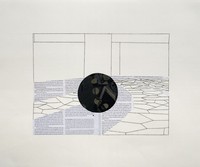
Nr. 9
Collage /Series
newspaper and thread on paper
50 x 60 cm
2013
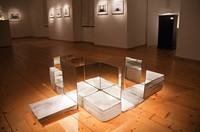
"A tut was B will, wenn B tut was A will / A does what B wants, if B does what A wants"
Part 1, plaster colored, mirrors
Exhibition view at "Gegenwelten", 2013
Kunsthistorisches Museum Schloss Ambras, Innsbruck
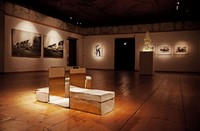
"A tut was B will, wenn B tut was A will / A does what B wants, if B does what A wants"
Part 1, plaster colored, mirrors
Exhibition view at "Gegenwelten", 2013
Kunsthistorisches Museum Schloss Ambras, Innsbruck
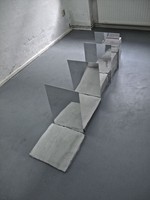
"A tut was B will, wenn B tut was A will / A does what B wants, if B does what A wants"
Part II, plaster colored, mirrors
180 x 40 x 50 cm
2013, exhibition view at GMÜR, Berlin
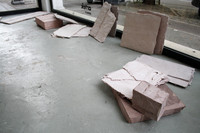
"es kann immer auch ganz anders sein"
(it can always be completely different)
Krome Gallery / DYRM Reading Room's storefront
Berlin, 2012
plaster colored, dimensions variable

"was möglich wäre"
(what would be possible)
Museum Lichtenberg, Berlin, 2012
150 x 150 cm, each approx. 40 x 30 cm, plaster colored
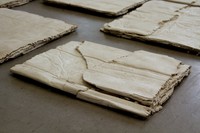
"was möglich wäre"
(what would be possible)
Museum Lichtenberg, Berlin, 2012
150 x 150 cm, each approx. 40 x 30 cm, plaster colored

"was möglich wäre"
(what would be possible)
Museum Lichtenberg, Berlin, 2012
150 x 150 cm, each approx. 40 x 30 cm, plaster colored
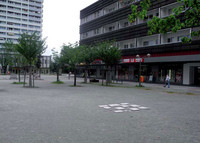
"was möglich wäre" Part II
(what would be possible)
Anton-Saefkow_Platz, Berlin, 20.08.2012
150 x 150 cm, each approx. 40 x 30 cm, plaster colored
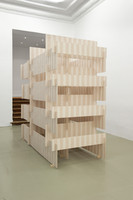
"wieder"
Krome Gallery, solo exhibition "ausschliesslich oder" (exclusively or)
Berlin, 2012, plywood, wallpaper, 232 x 112 x 230 cms

"weg"
Krome Gallery, solo exhibition "ausschliesslich oder" (exclusively or)
Berlin, 2012, sheetrock, prints
each, 200 x 60 cm

"zwischen"
Krome Gallery, solo exhibition "ausschliesslich oder" (exclusively or)
Berlin, 2012, plywood, dimensions variable

Krome Gallery, solo exhibition "ausschliesslich oder" (exclusively or)
graphite on laid paper
30 x 30 cms
2010
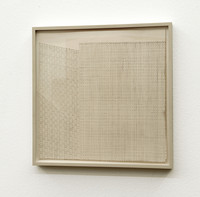
Krome Gallery, solo exhibition "ausschliesslich oder" (exclusively or)
graphite on laid paper
30 x 30 cms
2010
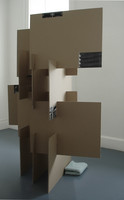
"Inherent Shortcomings / Natürliche Mängel"
Irish Museum of Modern Art, Process Room,
Dublin, 2011, solo
Cardboard, photographies, fabric
150 x 150 x 210 cm
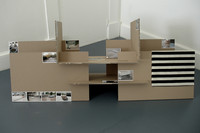
"Inherent Shortcomings / Natürliche Mängel"
Irish Museum of Modern Art, Process Room, solo
Dublin, 2011, solo
Cardboard, photographies, fabric
50 x 230 x 70 cm
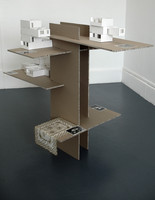
"Inherent Shortcomings / Natürliche Mängel"
Irish Museum of Modern Art, Process Room,
Dublin, 2011, solo
Cardboard, photographies, fabric, models
70 x 110 x 110 cm
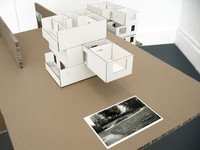
"Inherent Shortcomings / Natürliche Mängel"
Irish Museum of Modern Art, Process Room,
Dublin, 2011, solo
Cardboard, photographies, fabric, models
70 x 110 x 110 cm
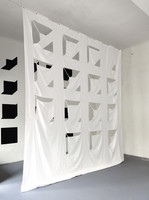
"Unendliche Folgen", Part 2
(Unlimited Outcome)
Delikatessenhaus Leipzig 2011
Molton, schwarze Wandfarbe
400 x 400 x 150 cm

"Unendliche Folgen", Part 1
(Unlimited Outcome)
Delikatessenhaus Leipzig 2011
Plexiglas, Sprelarcartplatten
170 x 60 x 80 cm

"Unendliche Folgen", Part 1
(Unlimited Outcome)
Delikatessenhaus Leipzig 2011
Plexiglas, Sprelarcartplatten
170 x 60 x 80 cm
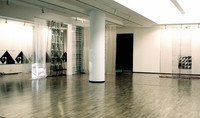
"Aus dem abweichenden Winkel"
(From a Deviting Angle)
National Gallery Tashkent, Uzbekistan, 2010
printed fabrics, projections, paper
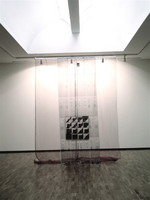
"Aus dem abweichenden Winkel"
(From a Deviting Angle)
National Gallery Tashkent, Uzbekistan, 2010
printed fabrics, projections, paper
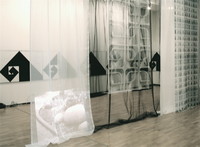
"Aus dem abweichenden Winkel"
(From a Deviting Angle)
National Gallery Tashkent, Uzbekistan, 2010
printed fabrics, projections, paper
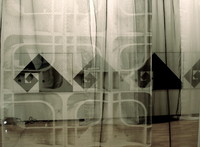
"Aus dem abweichenden Winkel"
(From a Deviting Angle)
National Gallery Tashkent, Uzbekistan, 2010
printed fabrics, projections, paper

"Für immer und immer"
(For Ever and Ever)
Mies van der Rohe Haus, Berlin, 2010
Kistensperrholz, Fassadenfarbe, Kunststoffstegplatten
360 cm x 180 cm x 130 cm
Foto: Roman März

"Für immer und immer"
Mies van der Rohe Haus, Berlin, 2010
Kistensperrholz, Fassadenfarbe, Kunststoffstegplatten
360 cm x 180 cm x 130 cm
Foto: Roman März
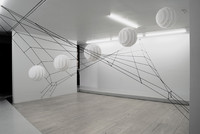
"Proraer Chaussee"
Kunstverein Wolfsburg, 2009
Exhibition view in "Reconstructed Zone"
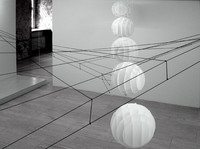
"Proraer Chaussee"
Kunstverein Wolfsburg, 2009
Exhibition view in "Reconstructed Zone"
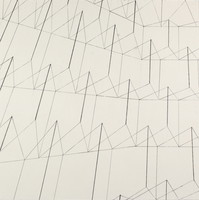
"Nr.08"
Graphit auf Bütten, 30 x 30 cm, 2009
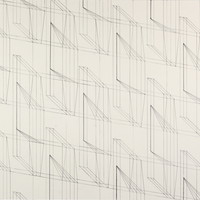
"Nr.13"
Graphit auf Bütten, 30 x 30 cm, 2009
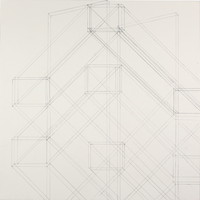
"Nr.18"
Graphit auf Bütten, 30 x 30 cm, 2009
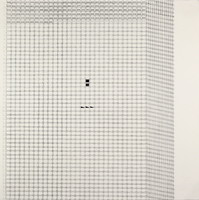
"Nr.12"
Graphit auf Bütten, 30 x 30 cm, 2009
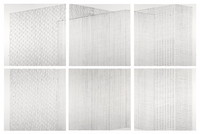
"Nr.02 - 07"
Graphit auf Bütten, 110 x 70 cm, 2009
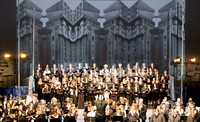
Bühnenbild für: "Gefühlssache Revolution"
an der Volksbühne am Rosa-Luxemburg-Platz, Berlin, 2009
Oratorium (Uraufführung) / Schlacht / Revue mit der Bolschewistischen Kurkapelle Schwarz-Rot, Chören und Orchestern
Foto: Roman März
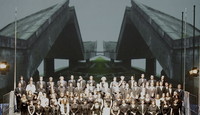
Bühnenbild für: "Gefühlssache Revolution"
an der Volksbühne am Rosa-Luxemburg-Platz, Berlin, 2009
Oratorium (Uraufführung) / Schlacht / Revue mit der Bolschewistischen Kurkapelle Schwarz-Rot, Chören und Orchestern
Foto: Roman März
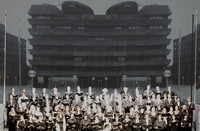
Bühnenbild für: "Gefühlssache Revolution"
an der Volksbühne am Rosa-Luxemburg-Platz, Berlin, 2009
Oratorium (Uraufführung) / Schlacht / Revue mit der Bolschewistischen Kurkapelle Schwarz-Rot, Chören und Orchestern
Foto: Roman März
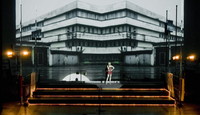
Bühnenbild für: "Gefühlssache Revolution"
an der Volksbühne am Rosa-Luxemburg-Platz, Berlin, 2009
Oratorium (Uraufführung) / Schlacht / Revue mit der Bolschewistischen Kurkapelle Schwarz-Rot, Chören und Orchestern
Solistin: Winnie Böwe
Foto: Roman März

Bühnenbild für: "Gefühlssache Revolution"
an der Volksbühne am Rosa-Luxemburg-Platz, Berlin, 2009
Oratorium (Uraufführung) / Schlacht / Revue mit der Bolschewistischen Kurkapelle Schwarz-Rot, Chören und Orchestern
Foto: Roman März
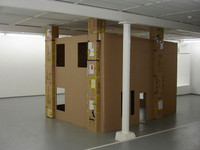
"Assortment Type: B" innerhalb der Ausstellung:
Bewohnte Orte / Obydlená Místa, Kunstverein Springhornhof, 2008
Wabenpappe, gebrauchte Bata-Transportkartons, Filmausschnitt (1:12 min), J.L. Godard “Eine verheiratete Frau”, 1964, 2,35 m x 3,46 m x 2,70 m
Maßstabgetreue Nachbildung des kleinsten Wohntyp der ersten funktionalen Satdt, die sich der Inhaber des jetzt weltweit größten Schuhkonzerns Bata, Tomás Bata Anfang der dreißiger Jahre in Zlín (Mähren) bauen ließ.
Kuratiert von Bettina von Dziembowski und Vaclav Milek
Mit: HAWOLI, Dominik Lang, Andrea Pichl, Rafani, Tilo Schulz, Antje Schiffers und Thomas Sprenger, Katerina Šedá, Libot Stavjaník
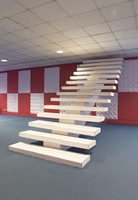
"This is the End"
Zentralbüro, Berlin, 2008
Installationsansicht, Papier, Pappe
Foto: Roman März
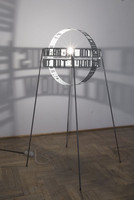
"Cause I wanna be anarchy"
Höhe: 190 cm,Durchmesser: 70 cm, 2007
Schriftband aus verzinktem Stahlblech, Glühbirne, Metallfüße
»Right now / I am an antichrist / I am an antichrist / I am an anarchist / Don’t know what I want / But I know where to get it / Cause I wanna be anarchy / It’s the only way to be ...«
Ausstellung "Vollendete Zukunft", Galerie parterre, Berlin, 2008, kuratiert von Jule Reuter
mit Arbeiten von Janina Bücking, Peter Bux, Patrycja German, MK Kähne, Melanie Manchot, Andrea Pichl, Andreas Rost, Suse Weber
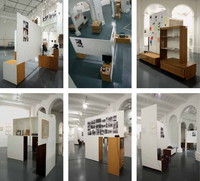
Exhibition design / installation "Fluxus East" / Fluxus Netzwerke in Mittelosteuropa,
2007, Künstlerhaus Bethanien
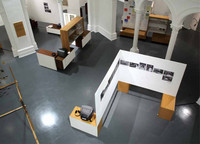
Exhibition design / installation "Fluxus East" / Fluxus Netzwerke in Mittelosteuropa,
2007, Künstlerhaus Bethanien,
curated by Petra Stegmann
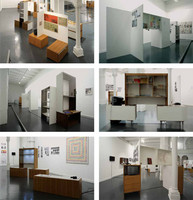
Exhibition design / installation "Fluxus East" / Fluxus Netzwerke in Mittelosteuropa,
2007, Künstlerhaus Bethanien

Exhibition design / installation"Fluxus East" / Fluxus Netzwerke in Mittelosteuropa,
2007, Contemporary Art Centre (CAC) Vilnius, Lithuania
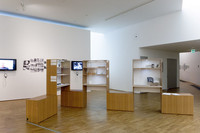
Exhibition design / installation"Fluxus East" / Fluxus Netzwerke in Mittelosteuropa,
2008, KUMU Art Museum, Tallinn, Estonia
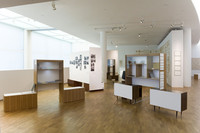
Exhibition design / installation"Fluxus East" / Fluxus Netzwerke in Mittelosteuropa,
2008, KUMU Art Museum, Tallinn, Estonia
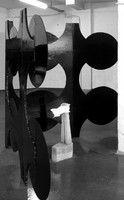
"Sorry"
Cardboard, Bitumen-Dachlack, Concret
150 x 150 cm
40 x 20 x 75 cm
glue, 2007, Berlin
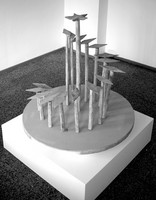
"Brunnen der Völkerfreundschaft"
concret, 100 x 100 x130 cm, 2007

"o.T."
Cardboard, 2007, Kunsthaus Erfurt

"Brunnen"
Cardboard, 2007, Kunsthaus Erfurt
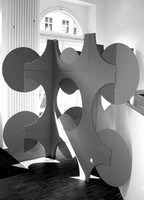
"o.T."
Cardboard, 2007, Kunsthaus Erfurt
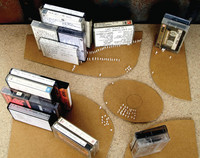
"Strausberger Platz", 2005
Tapes from private archives with recordings from independent and Punk bands like: Buzzcocks, Siouxsie and the Banshees, Einstürzende Neubauten, Joy Division, Patti Smith, Television, Tuxedomoon, The
Residents, Iggy Pop and UK Subs arranged according to the setting of Strausberger Platz in Berlin
Tapes, model figures 1:200
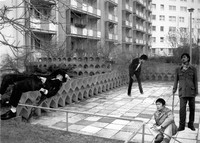
"o.T."
Piezopigmentdruck, 50 x 70 cm, 2007
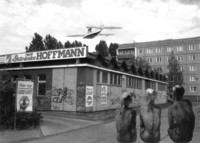
"o.T."
Piezopigmentdruck, 50 x 70 cm, 2007
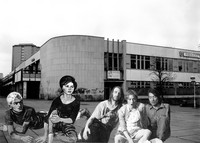
"o.T."
Piezopigmentdruck, 50 x 70 cm, 2007
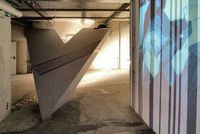
Ausstellungsarchtiktur für "ostPUNK! - too much future",
Punk in der DDR
Detailansicht
in Zusammenarbeit mit dem Künstlerhaus Bethanien,
Berlin, 2005

Ausstellungsarchtiktur für "ostPUNK! - too much future",
Punk in der DDR
Detailansicht
in Zusammenarbeit mit dem Künstlerhaus Bethanien,
Berlin, 2005
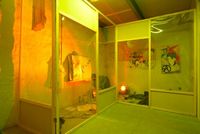
Ausstellungsarchtiktur für "ostPUNK! - too much future",
Punk in der DDR
Detailansicht
in Zusammenarbeit mit dem Künstlerhaus Bethanien,
Berlin, 2005
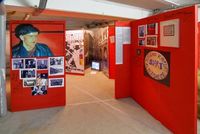
Ausstellungsarchtiktur für "ostPUNK! - too much future",
Punk in der DDR
Detailansicht
in Zusammenarbeit mit dem Künstlerhaus Bethanien,
Berlin, 2005
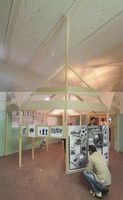
Ausstellungsarchtiktur für "ostPUNK! - too much future",
Punk in der DDR
Detailansicht
in Zusammenarbeit mit dem Künstlerhaus Bethanien,
Berlin, 2005

"stick together team"
Gallery Koch & Kesslau, Berlin, 2002
installation view
cardboard, winking christmas lights, sounds of computer games
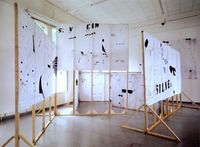
"Hast du tatsächlich Lust, dir ein Ferrari Cabriolet zu kaufen?"
Kunst - und Medienzentrum Adlershof, Berlin, 2003

"Renate"
3d-animation, 4 min - loop, 2002
Kunstbank, Berlin

"Renate II"
Goethe Institut Brüssel, 2002
3d-animation, cardboard
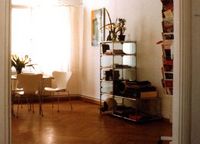
"Spaß an der Arbeit - Freude am Leben", Installation view Gallery Pankow, Berlin 2001

"Korrektur"
Galerie Gelbe Musik, Berlin, 1999

"soleirolia soleiroli"
Kunstbank, Berlin, 2001
installation view
